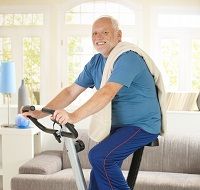Article
Exercise Can Protect Against Rheumatoid Arthritis
Author(s):
Leisure time activity such as biking or walking can reduce the risk of rheumatoid arthritis.

Physical activity can be a protective factor against the causes of rheumatoid arthritis (RA), according to findings published in Arthritis Research & Therapy.
Researchers from the Karolinska Institutet in Sweden examined middle aged and elderly women from the Swedish Mammography Cohort to determine if risk of RA was associated with physical activity. The researchers followed up with 30,112 women born between 1914 and 1948 who were aged 54 to 89 years between 2003 and 2010 to identify 201 RA cases.
The benefits of exercise are well documented, including reduced risk of mortality and decreased risks of cardiovascular disease, type 2 diabetes, and cancer, the authors commented; evidence is also mounting for the beneficial effects of physical activity such as walking and biking in reducing inflammation.
Physical activity was associated with a 35 percent lower risk of RA among women in the highest category of leisure time activity, which combined more than 20 minutes per day of walking or biking for a median of 40 to 60 minutes per day with more than 1 hour per week of exercise for a median of 2 to 3 hours per week. Women in the lowest category spent less than 20 minutes per day walking or bicycling and got less than 1 hour per week of exercise.
Something else the researchers highlighted as interesting was the fact that non-statistically significant decreased risk of RA was found for household work (negative 32 percent) and work/ occupation (negative 15 percent), while an increased risk was observed for leisure time physical inactivity (27 percent). There was no associated risk of RA linked to daily energy expenditure.
Previous studies have associated reduced RA risk with exercise, and the researchers noted that the World Health Organization already recommends adults perform at least 150 minutes of moderate intensity aerobic physical activity. The results of the study highlight the importance of leisure time activity, the authors stressed, because isolated training sessions and a lifestyle that includes physical activity is important for the prevention of RA.
“We observed a lowered RA risk among women who were physically active during leisure time (> 20 minutes per day of walking/ bicycling and > 1 hour per week of exercise),” the authors concluded. “Other kinds of physical activities, including home and/ or household work and occupation during the day, were also observed to decrease the risk of RA, while leisure time inactivity increased the risk.”





